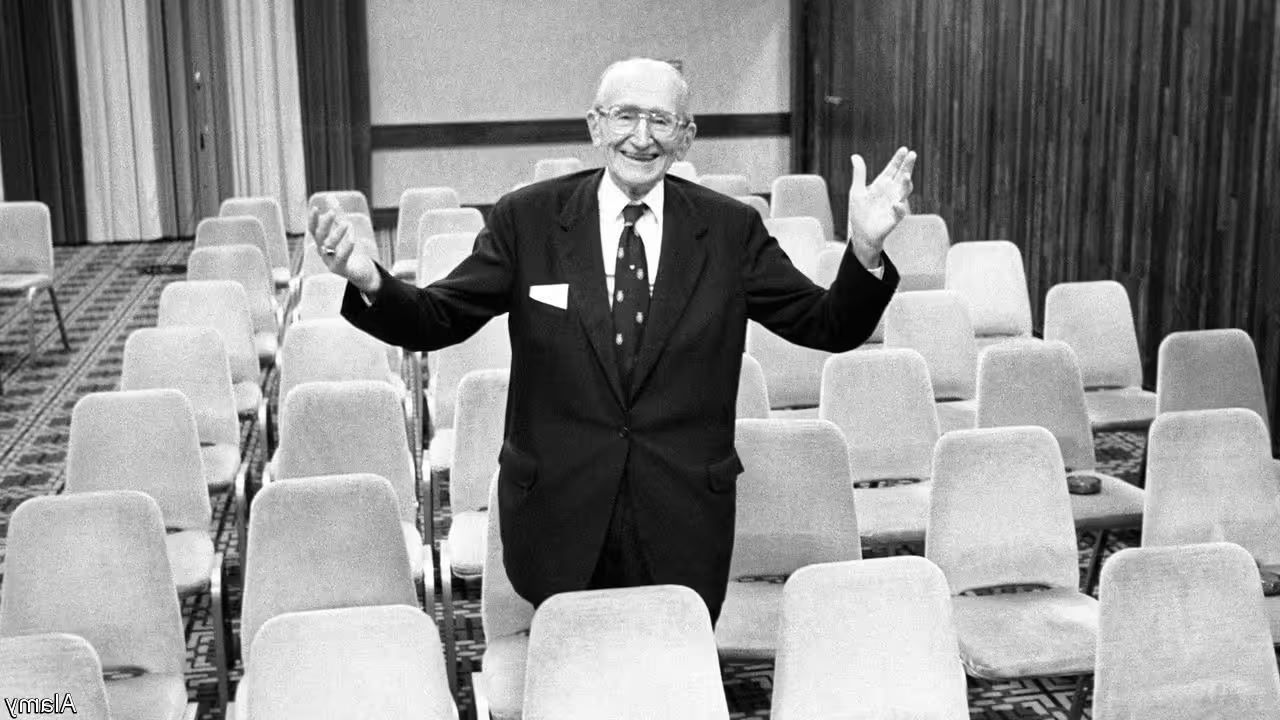
The Wright Brothers, Orville and Wilbur, are legendary figures in the field of aviation, known for their groundbreaking achievements in the early 20th century. In their pursuit of flight, the Wright Brothers revolutionized transportation and left an indelible mark on history. David McCullough, an acclaimed author and historian, has brought their incredible journey to life in his book, “The Wright Brothers.” This captivating literary work sheds light on the remarkable story behind these aviation pioneers and unveils several fascinating facts about their lives and accomplishments. From their humble beginnings in Dayton, Ohio, to their ambitious experiments in flying, the Wright Brothers’ determination and innovation have left a lasting legacy. In this article, we will explore 13 intriguing facts about the Wright Brothers that showcase their unparalleled contributions to the world of aviation.
Key Takeaways:
- The Wright brothers, originally bicycle mechanics, achieved the first powered flight after years of research and testing, shaping the future of aviation technology.
- Their determination and self-taught expertise in engineering led to the Wright brothers’ groundbreaking achievement, inspiring future aviators and sparking the era of modern aviation.
The Wright brothers were not originally interested in aviation.
Before their groundbreaking achievements in flight, the Wright brothers, Wilbur and Orville, owned and operated a bicycle sales and repair shop in Dayton, Ohio. Their fascination with mechanics and engineering eventually led them to pursue the dream of flying.
They conducted extensive research and testing before their first successful flight.
Prior to their historic flight in 1903, the Wright brothers spent years studying the principles of flight, conducting experiments, and building and testing various gliders to perfect their design. Their dedication and persistence paid off with their groundbreaking achievement.
The Wright brothers’ first flight lasted for just 12 seconds.
On December 17, 1903, at Kitty Hawk, North Carolina, the Wright brothers successfully flew their aircraft, known as the Wright Flyer I. The first flight covered a distance of 120 feet and lasted for a mere 12 seconds.
They made significant contributions to aviation technology.
The Wright brothers’ innovative ideas and designs helped shape the future of aviation. Their advancements in aeronautics, such as the three-axis control system and wing warping, laid the foundation for modern aircraft design.
The Wright brothers were exceptional self-taught engineers.
Without formal education in engineering, the Wright brothers taught themselves the principles of mechanics and aeronautics through extensive reading and experimentation. Their self-taught expertise is a testament to their determination and ingenuity.
The Wright brothers opened the first civilian flight training school.
In 1910, the Wright brothers established the Wright Flying School in Montgomery, Alabama. It was the world’s first school devoted to training pilots, marking another milestone in aviation history.
They were involved in patent disputes.
The Wright brothers fiercely protected their inventions and filed numerous patents related to aviation technology. This led to legal battles and patent disputes with other aviation pioneers, including Glenn Curtiss.
The Wright brothers’ achievements were often overshadowed by rival aviators.
While the Wright brothers made groundbreaking contributions to flight, they faced challenges in gaining recognition for their accomplishments. Other aviators, such as Glenn Curtiss and Samuel Langley, often received more attention and credit for their achievements.
They designed and built their own engines.
In addition to designing and constructing their airplanes, the Wright brothers also developed their own aircraft engines. Their lightweight and efficient engines were vital to the success of their aircraft.
The Wright brothers’ legacy lives on through the Wright Brothers National Memorial.
Located in Kitty Hawk, North Carolina, the Wright Brothers National Memorial commemorates the pioneers of aviation. It includes a museum, replica of the Wright Flyer, and the famous Kill Devil Hill, where the Wright brothers conducted their early flight experiments.
They achieved international recognition for their achievements in flight.
The Wright brothers’ success in aviation catapulted them to international fame. Their flights in Europe and demonstrations for governments solidified their status as pioneers of powered, controlled flight.
The Wright brothers’ determination and perseverance continue to inspire aspiring aviators.
The Wright brothers’ relentless pursuit of their dream serves as a beacon of inspiration for those who aspire to achieve greatness. Their story demonstrates the power of determination, innovation, and unwavering persistence.
Their breakthrough in flight sparked the era of modern aviation.
The Wright brothers’ accomplishment of achieving powered flight marked the beginning of a new era in transportation. Their invention changed the world and paved the way for the development of commercial aviation as we know it today.
Conclusion
In conclusion, the Wright Brothers, Orville and Wilbur, have left an indelible mark on the history of aviation with their incredible achievements. From their humble beginnings in Dayton, Ohio, to their groundbreaking invention of the first successful airplane, their journey is nothing short of remarkable.Through perseverance, ingenuity, and a relentless pursuit of their dreams, the Wright Brothers shattered the boundaries of human flight and paved the way for modern aviation. Their unwavering commitment to innovation and their tireless dedication to refining their designs have forever changed the world.Today, we can look back at the captivating facts surrounding the Wright Brothers and marvel at their extraordinary accomplishments. Their ingenuity, courage, and determination serve as a powerful reminder that with passion and drive, anything is possible.
FAQs
Q: When did the Wright Brothers make their first powered flight?
A: The Wright Brothers made their first powered flight on December 17, 1903, in Kitty Hawk, North Carolina.
Q: How long was the Wright Brothers’ first flight?
A: The first flight lasted 12 seconds and covered a distance of 120 feet.
Q: Did the Wright Brothers invent the airplane?
A: Yes, the Wright Brothers are credited with inventing and building the world’s first successful airplane.
Q: How did the Wright Brothers achieve controlled flight?
A: The Wright Brothers introduced three-axis control, including wing warping and a movable rudder, which allowed them to control the pitch, roll, and yaw of the aircraft.
Q: How many patents did the Wright Brothers hold?
A: The Wright Brothers were granted a total of four patents for their various aircraft designs and innovations.
Q: How long did the Wright Brothers’ aviation career span?
A: The Wright Brothers’ aviation career spanned from 1899 to 1912, during which they made significant advancements in aviation technology.
Q: What impact did the Wright Brothers have on aviation?
A: The Wright Brothers’ contributions to aviation revolutionized transportation, opened up new possibilities for exploration, and paved the way for the modern aviation industry.
Q: Are any of the Wright Brothers’ original airplanes still in existence?
A: Yes, several of the Wright Brothers’ original airplanes are preserved and displayed in museums around the world, including the Wright Brothers National Memorial in North Carolina.
Q: Were the Wright Brothers recognized for their achievements during their lifetime?
A: Yes, the Wright Brothers received recognition for their achievements, including the prestigious Collier Trophy and the French Legion of Honor.
Q: Did the Wright Brothers continue to innovate after their first flight?
A: Yes, the Wright Brothers continued to refine their designs and make significant advancements in aviation technology, including pioneering the use of ailerons and developing a practical two-seat airplane.
The Wright brothers' incredible journey from bicycle mechanics to aviation pioneers is truly awe-inspiring. Their relentless pursuit of flight, despite numerous challenges and setbacks, showcases the power of determination and innovation. As you've learned about their groundbreaking achievements, why not explore other fascinating aspects of aviation? Soar through the facts of aviation training and gain insights into the world of flight schools. The Wright brothers' legacy continues to influence aspiring aviators, and understanding the ins and outs of flight training can help you appreciate their contributions even more.
Was this page helpful?
Our commitment to delivering trustworthy and engaging content is at the heart of what we do. Each fact on our site is contributed by real users like you, bringing a wealth of diverse insights and information. To ensure the highest standards of accuracy and reliability, our dedicated editors meticulously review each submission. This process guarantees that the facts we share are not only fascinating but also credible. Trust in our commitment to quality and authenticity as you explore and learn with us.


